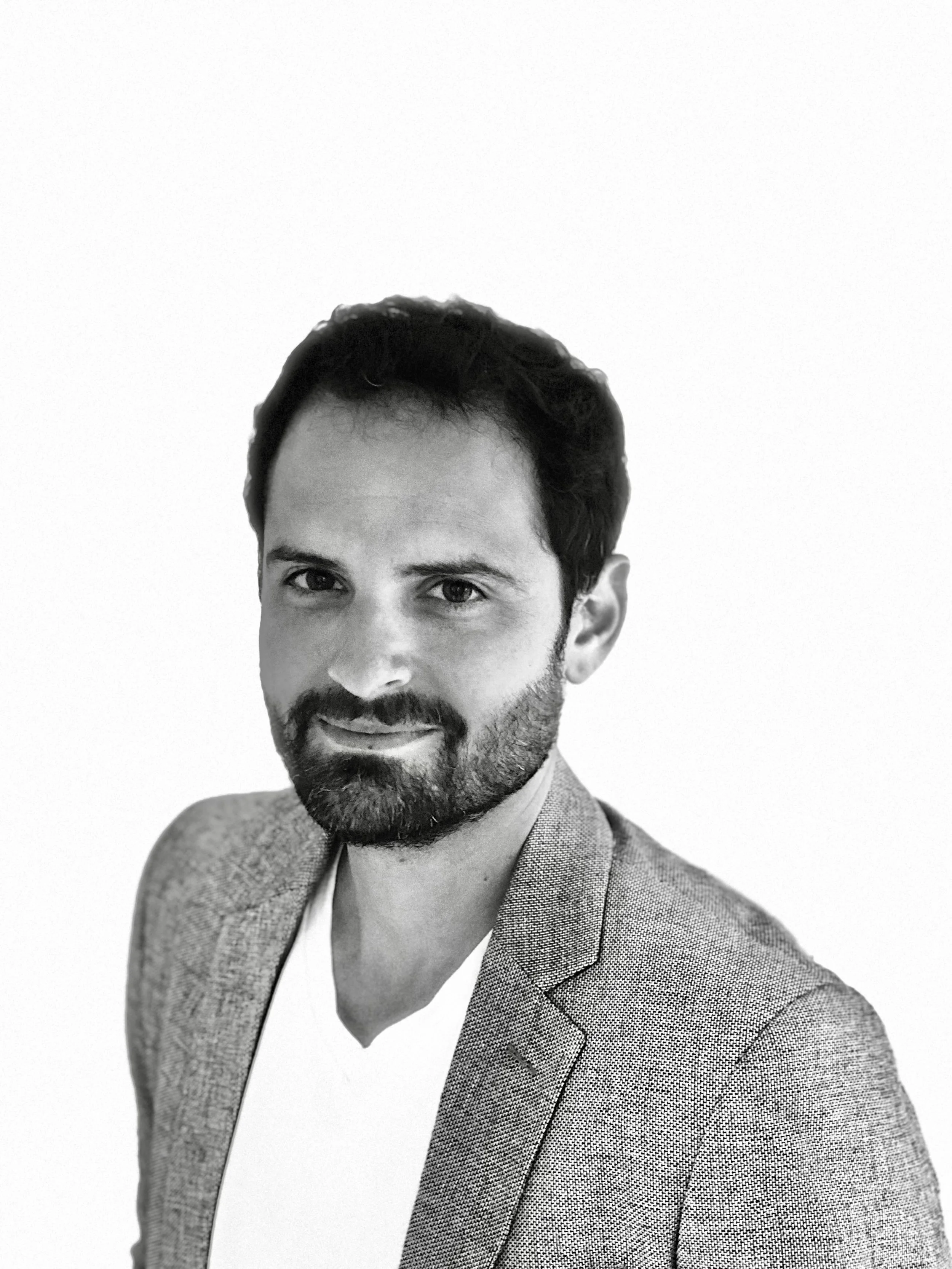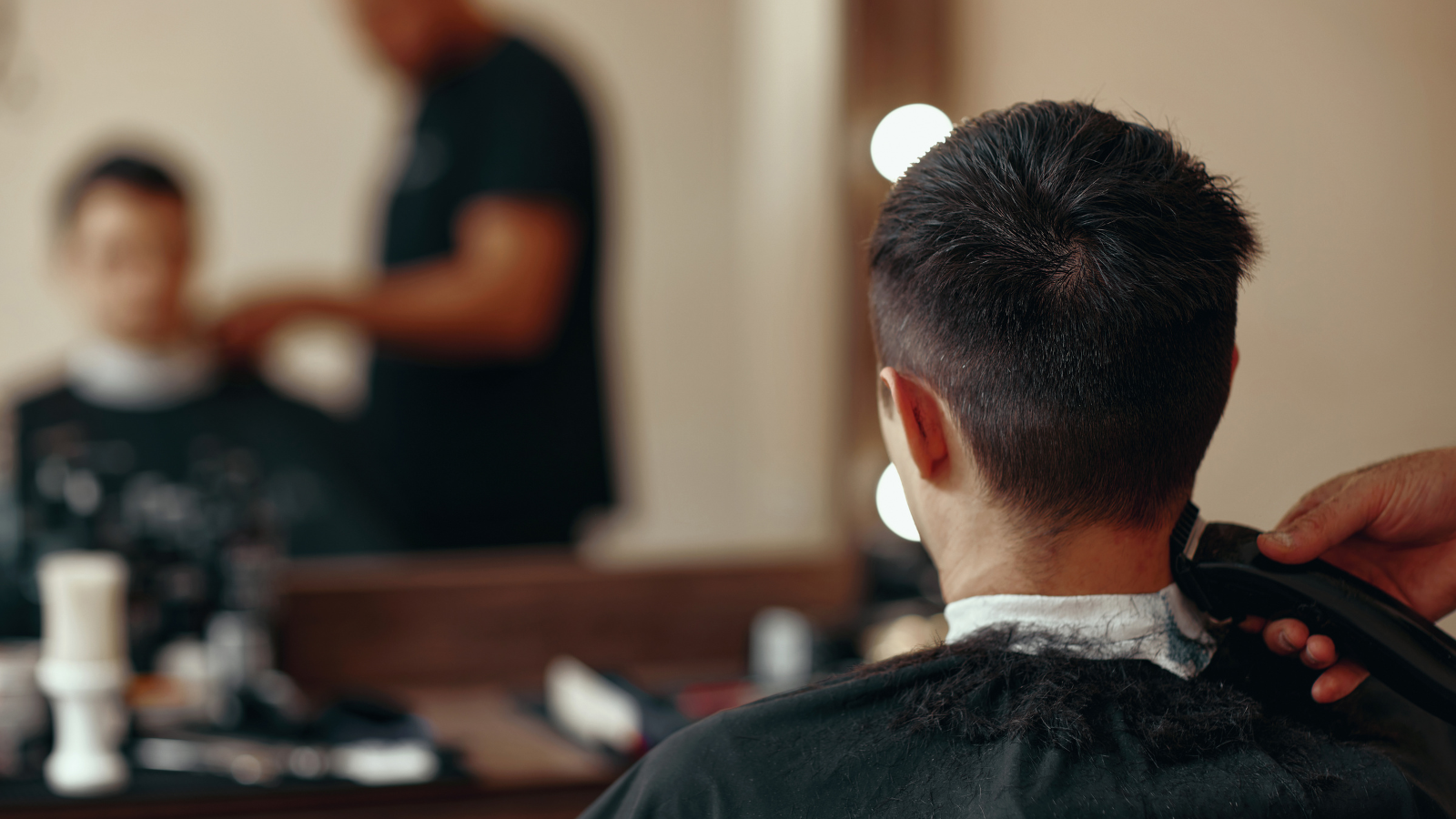Exercise science is weakened by gender ideology: an interview with Dr James Nuzzo
When James Nuzzo (pronounced ‘NEW zo’) was in high school in rural Pennsylvania, his experience in an anatomy and physiology course inspired him to combine his interests in sports and weight lifting with the study of how the human body works. This energised him on a journey which took him to the University of New South Wales in Australia to study a PhD on the neuroscience of strength training, followed by several successful years researching the neurophysiology of motor control and muscle strength. Along the way, he has found that gender politics obstructs scientific understanding, and this has become a recent theme of his work.
John Barry (JB): Your background is in exercise science, and you have had some very successful publications in that field. How did you get interested in male psychology?
James L Nuzzo (JLN): I first became interested in the field of men’s health in 2018. This is when I saw the extent to which some academics perform mental gymnastics to ignore poor health outcomes in boys and men.
Around that time, a position paper by the American College of Sports Medicine declared that the field of exercise science should try to create “equity in physical activity.” The organization argued that girls and women should be the focus of sports and physical activity initiatives because they tend to have lower activity rates than boys and men.
I found the organization’s argument odd considering that their overall intent was to use increased physical activity to create more equal health outcomes between demographic groups; yet, for many health outcomes, boys and men fare worse than girls and women. So, by targeting girls and women, and ignoring boys and men, such campaigns would, in theory, exacerbate, the many health outcomes where boys and men fare worse. For example, such an initiative would be predicted to widen the life expectancy difference between men and women, which is 5-6 years in the US.
As I wrote articles challenging the position paper, I realized I was dealing with a group of academics who were not interested in facts or logic. Their process was deductive rather than inductive. They started with a certain political goal and then worked backward to try to justify the goal. This was around the time that the wider “social justice” and diversity, equity, and inclusion (DEI) movements were taking off in the health science literature. In this literature, I could see, not just that men’s health was largely ignored, but that men were being accused of “privilege,” “toxicity,” and discriminating against women. I saw very little empathy expressed toward men or any interest in trying to understand the lives of boys and men. Eventually, I came across theories such as “gamma bias” and the “male gender empathy gap.”. The evidence supporting these theories continues to serve as a foundation for much of my work on men’s health.
JB: How much do the two fields overlap?
JLN: In the past couple of decades, a large amount of research has demonstrated that being physically active is associated with better mental health in men and women. Consequently, some researchers, myself included, believe that physical exercise should be considered part of standard care for many mental health conditions. Physical movement is fundamental to being a bipedal human. Thus, it is perhaps unsurprising that we tend to feel better psychologically when we propel our bodies through space.
Another way that male psychology relates to exercise science is that men and women do not necessarily express the same interests, preferences, or motivations for exercise. For example, though men and women share many of the same exercise interests, men are more likely to prefer golf and weight training; women are more likely to prefer dance, group aerobics, yoga, and stretching. Men are also more likely than women to be motivated to exercise by factors such as challenge, competition, social recognition, and the desire to increase muscle size and strength; women are more likely than men to be motivated by factors such as muscle “toning” and body weight management. By understanding boys’ and men’s unique motivations and preferences for exercise, we might then be able to curtail exercise programs and educational materials about exercise in ways that are most appealing to boys and men.
JB: How did you become interested in exercise science in the first place?
JLN: As a kid, and all through high school, I played sports. As part of my off-season training for sports, I started lifting weights. I discovered that, relative to my body weight, I was fairly strong. In fact, I set a couple of weight lifting recordings at my high school for my weight class. Around this time, I was also enrolled in an Anatomy and Physiology course. In the course, I learned about the various muscles of the body, and I started to generate a lot of questions about how all of what I was learning in class might apply to sports performance. For example, one day during off-seasons training, I ran a 100-m sprint against a teammate who was much bigger than I was. He was a shot putter and discus thrower on the track team. Even though I was quite strong relative to my own body weight, and trained hard every day, I was a slow sprinter, and my teammate beat me easily in the race. This was a heavy dose of reality for me. It showed me that many things – some of which are genetically determined – impact human performance. I was curious to learn what these things were, and how an athlete might be able to optimize their off-season training programs to maximize their individual potential. These are some of the main reasons why I decided to study exercise science as my bachelor’s degree.
JB: What research in exercise are you most proud of?
JLN: I am most proud of the papers that I was “not supposed to write.” These are papers that do not fall under the purview of what I was paid to research at the time when I wrote them. I call these “side projects” or “independent projects.” These papers have included large-scale reviews on the history of strength training research, the history of strength training equipment, the history of letters to the editor in exercise science journals, why flexibility should not be a major component of physical fitness, and how men and women differ across a variety of strength training-related outcomes, such as muscle size and muscle strength.
Though I am proud of these papers and the impact they have had, I have a particular affinity for a paper that has received almost no attention inside or outside of academia. It is a paper titled, “Time to reconsider foot and leg position during the bench press.” It was published in the Strength and Conditioning Journal in 2021. In the paper, I argued that the way the bench press exercise is taught and performed is incorrect. I argued that the “feet on the floor” guideline makes little sense biomechanically. Placing the feet on the floor is merely a consequence of a lack of technological advancement in bench equipment. That is, people put their feet on the floor because there is nowhere else for their feet to go! For individuals of a specific body heights and leg lengths, placing one’s feet on the floor might be the correct position. However, individuals come in all shapes and sizes, and historically, inventors have resolved such issues by making strength equipment more adjustable. But this has not been the case with the ends of exercise benches. In the paper, I explained how this unusual foot and leg position places the low back in an unsound position. The solution is to add adjustable foot plates to the ends of benches. This will make the exercise more biomechanically sound for individuals of all body heights. I suppose my affinity for the paper stems from the fact that no one else appears to have ever observed this issue, and that to make the argument, I had to combine knowledge from various disciplines such as anatomy, biomechanics, technology, and history.
JB: Have you submitted a patent for the adjustable foot plates?
JLN: No, I have not submitted a patent for the adjustable foot plates. Shortly after I wrote the paper, I consider this, and I took the first step toward it. I paid a patent lawyer to perform a formal search of the US Patent and Trademark Office’s patents database. The lawyer identified a couple of designs, which were not exactly what I had devised, but from the standpoint of the Patents and Trademarks Office, were probably too similar to my design to justify a separate patent. So, I elected to not move forward with the process. To this day, I still have not seen a bench that has incorporated this design.
JB: Why should flexibility not be a major component of physical fitness?
JLN: In 2020, I argued the case for retiring flexibility as a major component of physical fitness. My paper caused a stir. It received a lot of media and people seemed to either love it or hate it.
In the paper, I showed that flexibility, typically measured by the sit-and-reach test, is not strongly correlated with important health outcomes. This is unlike the other major components of physical fitness, such as cardiovascular endurance and muscle strength, which correlate with disease risk, mortality risk, and ability to perform daily activities. People are often encouraged to participate in stretching for the sole purpose of increasing their flexibility. However, if flexibility does not correlate with important health outcomes, then why are people, particularly those who are sedentary and/or overweight, encouraged to spend their limited time for exercise on stretching? To me, this is an inefficient and ineffective use of exercise time. Stretching will not resolve health issues associated with the “obesity crisis.” Moreover, other exercise modalities, such as weight training, not only improve muscle strength and other aspects of health and fitness, but they also increase flexibility. Thus, even if flexibility is important, stretching is not the only way one can improve it.
If people enjoy stretching, and it motivates them to goto the gym, then they should keep doing it. And, of course, there will be specific types of athletes or performers (e.g., dancers, gymnasts) for whom high levels of flexibility are important. However, people should not be given the impression that flexibility is as critical for health as cardiovascular endurance, muscle strength, and agility. If we are talking about the average person who is not currently meeting recommended guidelines for physical exercise, they should not feel obliged to perform stretching as part of an exercise program. Instead, they should focus on improving their cardiovascular health through cardiovascular exercise, and they should focus on improving their muscle size, strength, and power through resistance exercise or sports activities.
JB: Do you have any ‘top tips’ for men who want to get fit?
JLN: Tip 1: Eat less. I know some people might think this tip is too blunt or too simple, but I think it is fundamental to lose unwanted body weight. It is impossible to not lose weight if one stops eating; it’s called fasting. Presumably, our ancestors would have had fasting imposed upon them by their environments. Today, however, diet must be self-regulated. Adding to the challenge of self-regulation is that food is cheap, and we are surrounded by it everywhere we go.
To eat less, I recommend that people break away from the thinking that they need to have three large meals per day with snacks mixed in between. This is a social and cultural thing. It likely causes overeating, and there is no physiological reason why the three meals per day approach should be the way that people consume their food. Instead, I recommend eating mini meals or snacking throughout the day on healthy foods. Here, the idea is to eat enough food to take the hunger edge off and then stop. Taking the edge off satisfies your brain, which then allows you to get back to working, studying, etc.
Tip 2: Stop consuming junk food. Junk food has little nutritional value. There is no reason to regularly sip on soda pop or snack on chips or candy bars throughout the day.
Tip 3: Stop drinking so much beer. Having a drink or two every once in a while for social reasons is fine. But regular drinking is associated with many negative physical and mental health outcomes. Cutting back on alcohol will also save money that can be used to buy healthier foods, a gym membership, or home exercise equipment.
Tip 4: Walk (or run) 10,000 steps per day. Sometimes, exercise recommendations can be overly complicated, and access to certain types of exercise equipment might not be possible. Barring inclement weather, one thing that everyone can do is walk (or run). For most adults, 10,000 steps each day is a fairly good goal in terms of the minimum amount of movement an otherwise healthy adult should strive to achieve.
Tip 5: Do the exercise that you enjoy the most. There is some truth to the saying “the best exercise is the one that you’ll actually do.”
Tip 6: Get out in nature for exercise. We did not evolve from ancestors who walked on treadmills under fluorescent lights or on stationary bikes in dark garages. We are meant to be moving about in nature. I encourage exercising in various environments – both indoors and outdoors.
Tip 7: A little bit can still go a long way. There is increasing scientific evidence showing that minimal amounts of exercise – for example, one exercise session per week, called the “Weekend Warrior” approach – is still helpful in reducing risk of disease and early mortality compared to being sedentary.
JB: You are from the US. What was it like there in terms of university / work, and how does it compare to Australia?
JLN: One the biggest differences is the number of universities. The US and Australia are similar in geographic size, but Australia has only 25 million residents compared to 330 million residents in the US. Consequently, there are fewer universities in Australia than in the US. The US has approximately 4,000 universities. Australia has only 43 universities. Thus, there are substantially fewer universities to study and work at in Australia than in the US.
“Research assistants in Australia often earn higher salaries than higher credentialed postdoctoral researchers in the US, particularly when the difference in number of days of annual leave between the two countries is factored in.”
Another big difference between the two countries is the way their PhD programs are structured. In Australia, most PhD programs involve only a research thesis component. PhD students in Australia rarely take courses or examinations as part of their degree programs. Consequently, the time to complete a PhD in Australia is less than in the US. In the US, the average time to complete a PhD is perhaps 5 years. In Australia, PhD students can finish their degrees in 3 or 3.5 years, with an average of around 3.5 to 4 years. This was one of the main reasons why I chose to pursue a PhD in Australia rather than the US.
Work-recreation balance is another big difference between Australia and US, though this is not specific to academic work. In Australia, full-time employees are entitled to four weeks of paid annual leave. In the US, I believe the average is about 10 days. I mention the difference in annual leave because I believe it reflects the different approaches to mental health between the two countries. Australians are prolific travellers; they understand the positive impact of travel, rest, and leisure on mental wellbeing, including happiness and satisfaction at the workplace. My observation is that many Americans do not have this same level of appreciation for the importance of travel, rest, and leisure on mental and physical wellbeing.
“Peer reviewers seem to be more accepting of my research on physiological differences between men and women (e.g., muscle fatigability) and less accepting of my research on psychological differences”.
Pay in academia is another difference between the two countries. This is particularly true for research assistants and postdoctoral researchers. Research assistants in Australia often earn higher salaries than higher credentialed postdoctoral researchers in the US, particularly when the difference in number of days of annual leave between the two countries is factored in. This pay difference is one reason why I stayed in Australia after finishing my PhD.
JB: I know that a paper of yours from 2020 has had an impressive number of downloads (1656 from the Psychreg site, probably more from Researchgate, Academia and others), but so far has only been cited five times, according to Google Scholar. Why do you think that is?
JLN: I think there are a couple of reasons why my paper on bias against men’s issues at the United Nations (UN), and its health branch the World Health Organization (WHO), has not been highly cited. One reason is the journal that the paper was published in. The journal is not indexed in some databases. Thus, researchers will not discover the paper if searching certain databases. Also, because the journal is not highly ranked in terms of its impact, researchers who stumble across the paper will be sceptical of it; they will want to know why the paper was not published in a more reputable journal. Another likely reason why the paper has not been highly cited is its topic. Some researchers might fear public or institutional backlash if they cite a paper that questions the intentions of the UN and WHO and proposes a bias against boys and men.
“…a peer reviewer responded: ‘Data be damned, I know women are understudied and you will not convince me otherwise. Perceptions trump data’.”
JB: Some people say academia is biased against certain types of research e.g. research into sex differences. Is that true, in your experience?
JLN: I’ve had mixed experiences with regard to my research on sex differences. Peer reviewers seem to be more accepting of my research on physiological differences between men and women (e.g., muscle fatigability) and less accepting of my research on psychological differences between men and women. I have also experienced issues related to my research on men’s issues or gender biases. For example, in one commentary where I explained that bias and discrimination against women are not the only potential explanations for why we sometimes observe fewer female than male participants in exercise research, a peer reviewer responded: “Data be damned, I know women are understudied and you will not convince me otherwise. Perceptions trump data.”
Editors at journals also contribute to the difficulty in getting papers on sex differences and men’s health published. For example, my recent paper on “male circumcision” was under consideration at the International Journal of Human Rights for two years! This slowness was not the fault of the peer reviewers, who, within a reasonable timeframe, provided positive comments on the paper. Instead, I could see that paper was sitting in the editor’s inbox for months at a time. Similarly, my recent paper on sex differences in interest and willingness to participate in exercise research sat in an editor’s inbox for an excessive amount of time, resulting in a total time under review of 1.5 years. For perspective, most papers are published within a few months to a year.
I’ve also experienced difficulty in getting letters to the editor published on these topics. I had two letters rejected by one journal editor, who did bother to formally review my letters. Finally, we recently had a letter on “gender-based violence” sent out twice to a group of three peer reviewers. Letters are almost never sent out for peer review, given their brevity and purpose. We were told by the journal’s editor that the reason our letter was sent out for peer review was because it was on a topic that might be considered “controversial.” By sending the letter out for peer review twice, the editor delayed publication of our letter by several months.
JB: If so, what can we do about this?
JLN: One way to combat bias against publishing research on sex difference and men’s health is to simply keep trying to find an appropriate journal for the research. A substantial number of academic journals exist. Some will be friendly to publishing papers on sex differences and men’s health, whereas other journals will not. Even if a paper is published in a low-impact journal, at least the work can be referenced in future papers.
“My observation is that Australians are more mindful of mental health issues, more open to discussing personal mental health in public, and more likely to see a psychologist for a mental health ‘tune up’. In the US, mental health seems to be more of a taboo subject”.
Also, promoting one’s research on social media, particularly if the paper is published open access, might help the research to be seen by more people. Another potential solution is to publish a manuscript on a pre-print server while the paper is under review. Manuscripts that are published on pre-print servers are open access. Thus, the research results can be shared openly even if the paper is later rejected by peer reviewers.
JB: Is the attitude to masculinity different in the US and Oz? Is the attitude of the general public the same as the attitude of academics in each country?
JLN: Overall, I believe there is greater and more explicit interest in men’s health in Australia than in the US. In Australia, some government and non-governmental bodies have been generated reports on men’s health. Men’s Sheds and Movember also appear to be more prominent in Australia than in the US.
I believe that greater awareness of men’s health issues in Australia compared to the US is due to differences in overall views toward mental health in the two countries. My observation is that Australians are more mindful of mental health issues, more open to discussing personal mental health in public, and more likely to see a psychologist for a mental health “tune up.” In the US, mental health seems to be more of a taboo subject and portrayed as only relevant to the most mentally unwell individuals. In other words, in the US there appears to be certain stigmas around mental health that are not present in Australia. I also would not be surprised if drug prescriptions for mental health issues are more common in the US than Australia.
“Every week, I receive emails from my university with announcements about career opportunities and events for women and how the university is making progress toward “gender equality.” I have never received an equivalent email announcing opportunities and events for men.”
When it comes to the universities, I believe both countries are experiencing substantial feminization, both in terms of human resources and in campus culture. Women now make up most staff and students at universities. Women also work in most of the DEI roles at universities. These roles contribute to significant bureaucratic bloat in higher education, diverting resources away from education and research and toward social and cultural events and unnecessary oversights. Universities in both countries are also becoming more openly anti-male. Every week, I receive emails from my university with announcements about career opportunities and events for women and how the university is making progress toward “gender equality.” I have never received an equivalent email announcing opportunities and events for men. I am also unaware of any universities acknowledging International Men’s Day, whereas they hold campus events for International Women’s Day. In recent years, I have also seen a small number of female-only academic positions, particularly in STEM, advertised by Australian universities.
JB: Which male psychology paper are you most proud of and why?
JLN: Each paper holds a unique place for me. My first paper on men’s health, which summarized the epidemiological evidence of health conditions that predominantly impact boys and men, is special to me because it resulted in connections with a range of individuals working in the space of men’s health.
However, one effort I am particularly proud of is a letter that I, along with Dr. John Barry and Deborah Powney, published on the topic of “gender-based violence” and exercise science education. Our letter was written in response to a commentary paper that claimed that (a) exercise scientists have a “blind spot” for gender-based violence and (b) university curricula for exercise science students should include education on gender-based violence. However, the commentary was a one-sided story. It portrayed violence in intimate partner and sports environments as only male perpetrator and female victim. Our letter refuted this idea.
“A hot-button topic among feminist-leaning exercise scientists at the moment is the claim that women have historically been excluded (by men) from participating in exercise research studies. The impression one gets from reading these papers is that women were almost never included as participants in exercise studies prior to a decade or two ago. This is not true.”
I was proud of our letter for a few reasons. First, we absolutely obliterated the commentary to the point that the authors elected not to reply to our letter. We proved that it was the authors who had a “blind spot” on the topic. We did this by cramming our 500-word letter full of some of the best references on intimate partner violence, which show that rates of intimate partner violence victimization are similar between men and women.
Second, our letter also contained a novel mini-review of rates of physical, psychological, and sexual violence of male and female athletes in sports environments. These data also showed similar rates of victimization between males and females.
Third, I am proud of our letter because I believe it will slow the ideas put forward in the commentary from being transmitted throughout the academic world. This means that male exercise science students will not have to sit in a lecture hall and listen to their professor regurgitate a one-sided story about gender-based violence.
Finally, I am proud that we managed to get the letter through peer review. The review process was frustrating. Letters are almost never sent out for peer review, but the editor sent our letter out for peer review because it was on a “controversial” topic. We then experienced several unnecessary delays in getting the piece published.
JB: What is the most interesting or unexpected thing you have found in your research?
JLN: One neat thing that I discovered in my research on the history of patent applications for strength training equipment is the multitude of ways in which male ingenuity has made muscle-strengthening exercise safer and more accessible, affordable, personalized, inclusive for everyone. Men have designed approximately 99% of all strength training equipment. To better understand men’s purposes for their inventions, I performed a content analyses of their patent applications. I identified trends across applications and then developed a mnemonic device, CHAPS MANLINESS, which summarizes the various ways in which men have advance strength training with their inventions. For example, the letter “C” stands for “compact,” meaning that men have been designing strength training equipment that is smaller so that it takes up less space in the gym or at home. The letter “H” stands for “home use,” meaning that men have been designing strength training equipment that can be used at home or in the office and thus makes exercise participation more convenient for many people. The letter “M” stands for “multiplicity,” meaning that men have been designing strength training equipment that allows for multiple exercises to be performed on it, which can, among other things, reduce costs because of not having to buy separate equipment for each individual exercise. Thus, CHAPS MANLINESS is intended to help professors and students learn of the good that men have done in making strength training exercise more inclusive – including for women!
JB: From within your research, or from others, what is one of the key things people should know about, but don’t?
JLN: A current hot-button topic among feminist-leaning exercise scientists the claim that women have historically been excluded (by men) from participating in exercise research studies. The impression one gets from reading these papers is that women were almost never included as participants in exercise studies prior to a decade or two ago. This is not true. For example, in strength training research, women comprised 30% of all participants between 1890 and 1979. Moreover, our recent survey research has highlighted that women are less willing and interested to participate in exercise research than are men. Such sex differences are never considered in papers that espouse the idea of bias against women in research studies.
Claims of “underrepresentation” of female participants in research studies also have a history of being wrong. For example, the Office for Research on Women’s Health within the National Institutes of Health in the US was founded in 1990 based on the claim of widespread exclusion of women in clinical trials. A couple of years after the Office was established, the topic was properly investigated, and the original claim of female underrepresentation was found to be untrue. In fact, for many years, women have comprised a greater proportion of participants in NIH-funded research than have men.
“I also find that singing and playing guitar releases stress. Another great thing about writing your own music is that as you get older, it’s a way to remind yourself of your own history and unique experiences and how you have evolved”.
JB: Can you tell me about any new projects you are working on?
JLN: My new major project is my Substack page The Nuzzo Letter. Publishing ideas through academic peer-review has become a nightmare experience – slow review times, biased reviewers, and no payment for one’s work. I am transitioning to a platform where I can share my ideas quicker and with a wider audience.
In terms of my exercise research, I have a couple of papers that I am currently writing. Two of these papers are on the topic of exercise nomenclature. Gym exercises are often named inconsistently. This creates confusion about how to best communicate information about muscle-strengthening exercise with the lay public and in education materials read by exercise science students. My papers will present new results and new ideas regarding the words that we use to communicate about muscle-strengthening exercise.
JB: There is a rumour that your next research paper will not be published in a journal, but downloadable as a tune on Spotify called ‘I got the flabby out of shape blues’. Ok that’s not a rumour - it’s my attempt at humour – but can you tell me a bit about your interest in making music?
JLN: I write songs on acoustic guitar. I was never formally trained as a musician, and I did not pick up a guitar until I was about 18 years old. Consequently, the songs I write are rudimentary. Nevertheless, I enjoy composing songs. I enjoy the challenge and sense of accomplishment associated with the creative writing process. I also find that singing and playing guitar releases stress. Another great thing about writing your own music is that as you get older, it’s a way to remind yourself of your own history and unique experiences and how you have evolved or stayed the same over time. The truth is that my unknown rudimentary music means just as much to me as my frequently-cited and technically sophisticated papers published in scientific journals.
“The gynocentric approach is interested in helping men insofar that doing so serves the interests of women. Researchers working in this space are feminist wolves dressed in sheep’s clothing. At the surface, they appear to be interested in helping men, and to a certain degree, they are. However, fundamental to their approach is a greater in interest in helping women than men and an incomplete application of empathy toward boys and men.”
JB: Is there anything else you would like to tell readers of Male Psychology magazine about?
JLN: Interest in male psychology appears to be growing. Various individuals and organizations are now carving out their space in the men’s health arena. Currently, things are a bit messy in terms of where people should go to find the best information on men’s health. I think the messiness is natural and okay. Over time, I think the best ideas will find their way to the top, and I think the increased attention direct toward men’s health is a good thing.
However, I am currently warning people to look for two different philosophical approaches that might be taken by academics working in the area of men’s health: the gynocentric approach and the androcentric approach. The gynocentric approach is interested in helping men insofar that doing so serves the interests of women. Researchers working in this space are feminist wolves dressed in sheep’s clothing. At the surface, they appear to be interested in helping men, and to a certain degree, they are. However, fundamental to their approach is a greater in interest in helping women than men and an incomplete application of empathy toward boys and men. I am a proponent of the androcentric approach. The androcentric approach to men’s health unapologetically declares that the purpose of a men’s health initiative is to improve the lives of boys and men.
Final thoughts
James Nuzzo has an impressive publication record, but it seems his field of exercise science has fallen victim to the tendency – no doubt familiar to many readers of this interview – for academia to muddy science with gender ideology. One could argue that ideology is eroding every branch of science today, and it is inspiring to see people like Dr. Nuzzo who are prepared to call out the dogma and insist on objectivity in science.
Biography
James L. Nuzzo, PhD is an Adjunct Senior Lecturer in the School of Medical and Health Sciences at Edith Cowan University in Australia. He is the author of over 70 peer-reviewed research articles and recently launched The Nuzzo Letter on Substack. He is active on Twitter @JamesLNuzzo.
Scroll down to join the discussion
Disclaimer: This article is for information purposes only and is not a substitute for therapy, legal advice, or other professional opinion. Never disregard such advice because of this article or anything else you have read from the Centre for Male Psychology. The views expressed here do not necessarily reflect those of, or are endorsed by, The Centre for Male Psychology, and we cannot be held responsible for these views. Read our full disclaimer here.
Like our articles?
Click here to subscribe to our FREE newsletter and be first
to hear about news, events, and publications.
Have you got something to say?
Check out our submissions page to find out how to write for us.
.
























































